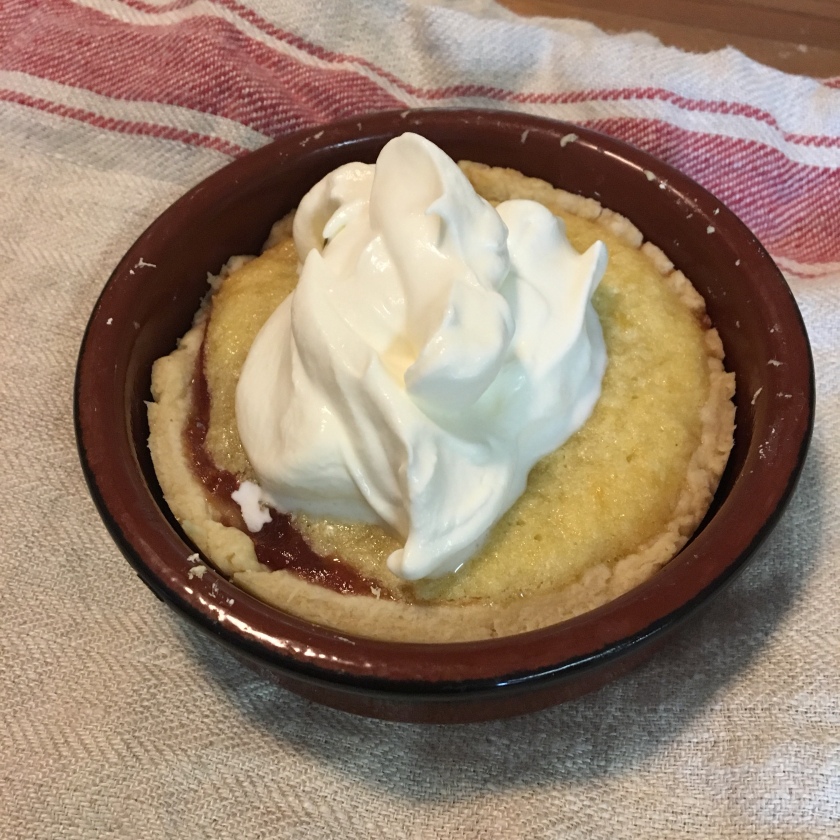
My Frangipane enthusiasm remains undiminished, and this weekend I decided to play with the flavors a bit. I added a bit of fruit preserves to the bottom of each tart — some quince, some tart cherry — and made the Frangipane with lemon juice and zest. I also went with a very rich modern pastry for the crust, and because I believe in gilding the lily I served them with a dollop of fresh whipped cream. Although it’s not rooted in history, here is the recipe if you’d like to make your own.
Pastry:
- 12 ounces flour
- 1 teaspoon salt
- 1 tablespoon sugar
- 2 sticks butter
- 4 tablespoons water
Preheat oven to 350F. Mix together the dry ingredients, then cut and rub in the butter until mixture is crumbly (looks like breadcrumbs or coarse wet sand). Add the water and mix gently to bring together. Divide into 8 pieces and roll out. Line 8 small (4″) tart pans or ramekins (as pictured here) with the pastry and trim the edges. (Mine slumped — leave a bit of overhang to prevent that.) Prick the bottom of each crust gently all over with a fork, then line each with parchment paper and fill with weights or dry beans. Blind bake for 15-20 minutes, until pastry looks dry all over.
While the pastry blind bakes, prepare the filling:
- Optional: 8 teaspoons jam / preserves, set aside
- 4 ounces sugar
- 4 ounces softened butter
- 4 ounces finely ground almonds / almond flour
- Juice and zest of one medium lemon
- 2 eggs
- Pinch of salt
Cream together butter and sugar. Add ground almonds and salt and mix well — it should look pale and fluffy. Add the lemon juice and zest and eggs and beat enthusiastically until everything is well incorporated.
Once the crusts have come out of the oven and cooled enough to remove the weights and parchment, spread a teaspoon of jam or preserves in the bottom of each, then top with the almond mixture. Be careful not to overfill (hence splitting the recipe between 8 small tarts). Bake tarts for 30 minutes. Let cool prior to serving.




